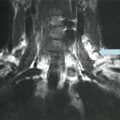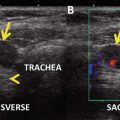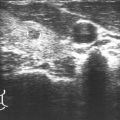Study first author 2006 (References)
% with minimal extra-thyroidal extension
Nixon 2011 [6]
11.6
Radowsky 2014 [7]
14.1
Arora 2008 [8]
22.6
Hotomi 2012 [9]
29.6
Ito 2006 [10]
30.5
Shin 2013 [11]
31.0
Jung 2013 [12]
44.0
Comparison of Minimal with Major Extra-thyroidal Extension
Older studies rarely distinguished minimal and major extra-thyroidal extension [13–17]. These classic papers showed that extra-thyroidal extension was associated with poor prognosis. However, other large series gave clues that the most critical factor was major extra-thyroidal extension. The Mayo Clinic and Memorial Sloan Kettering Cancer Center did this by defining extra-thyroidal extension based on visual operative findings (hence classifying patients with microscopic extension as having intrathyroidal tumors) and showed that macroscopic extra-thyroidal extension had markedly impaired prognosis, while patients with only microscopic extra-thyroidal extension had overall very good prognosis [18, 19].
More recent analyses have confirmed large differences in outcome between minimal and major extra-thyroidal extension. Arora and colleagues assessed 212 patients with papillary thyroid cancer for disease-free survival, finding a 6.4 (95 % confidence interval = 1.6–25.9) times increased recurrence risk for patients with major extra-thyroidal extension compared with those who had minimal extension, after taking other prognostic factors into account [8]. The European Multicentre Study Differentiated Thyroid Cancer prospectively recruited 351 patients with extra-thyroidal growth defined using older staging systems, thus giving the opportunity to compare recurrence outcomes in those with minimal vs. major extension [20]. Major extra-thyroidal extension was independently associated with a 3.23 (1.10–9.51)-fold higher risk of progression than minimal extra-thyroidal extension. In 930 patients, Hotomi and colleagues from Japan found that recurrence was 6.76 (4.25–10.76) times more likely and death was 7.97 (4.20–15.14) times more likely for patients with major extra-thyroidal extension than for patients with minimal or no extra-thyroidal extension [9]. Consistent with the clinical outcome data, tumors with more extensive extra-thyroidal extension have been found to harbor higher rates of angioinvasion and are of higher proliferative grade [21].
Given that major extra-thyroidal extension appears to denote more aggressive disease and a significantly poorer prognosis than minor extra-thyroidal extension, it is important to consider whether minor extra-thyroidal extension holds any prognostic influence. We will consider this question for both survival and risk of recurrent disease.
Survival with Minimal Extra-thyroidal Extension
In the absence of other negative prognostic factors, survival of patients with minimal extra-thyroidal extension is excellent. The National Thyroid Cancer Treatment Cooperative Study is a large multicenter registry of thyroid cancer patients from 11 hospitals in North America. For papillary cancer, its unique staging system classifies microscopic extra-thyroidal extension as either stage I (age <45 years) or stage II (≥45 years). Patients can be upstaged in the presence of additional factors (i.e., tumor size >4 cm, positive cervical lymph nodes, or distant metastases). Therefore, in patients aged <45 years, stage I patients with microscopic extra-thyroidal extension also have tumor sizes ≤4 cm and can have positive cervical lymph nodes but not distant metastases. Similarly, in those aged ≥45 years, stage II patients with microscopic extra-thyroidal extension also have tumor sizes ≤4 cm, negative cervical lymph nodes, and no distant metastases [22]. The disease-specific survival for these patients approaches 100 % [22–24], with the most recent published analysis including 3572 patients totally 16,683 person years (2728 patients stage I or II) [24]. Similar excellent survival has been found in 115 otherwise low-risk patients with minimal extra-thyroidal extension treated at Memorial Sloan Kettering Cancer Center [6]. Hotomi and colleagues reported a 97.3 % 10-year disease-specific survival (and similar results out to 15 years) in 275 patients prospectively followed with “minimal” extra-thyroidal extension [9]. These authors’ definition of minimal extra-thyroidal extension differed from many other cohorts, being enriched with a substantial number of patients who would otherwise be considered to have major extra-thyroidal extension (i.e., 42.5 % of these patients would be classified as either T4a or T4b on TNM staging, and 14 % of patients had lateral cervical node metastases).
Recurrence Risk with Minimal Extra-thyroidal Extension
Two studies report no increased recurrence risk from minimal extra-thyroidal extension. Ito and colleagues investigated 1167 Japanese patients undergoing curative intent surgery followed for a minimum of 5 years, of whom 356 had minimal extra-thyroidal extension. There was no difference in recurrence in patients with minimal extra-thyroidal extension compared to those without; the recurrence-free survival of patients with minimal extra-thyroidal extension at 15 years post-diagnosis was over 90 % [10]. When considering the 215 patients with minimal extra-thyroidal extension over age 45 years, the overall cohort results were replicated [25]. Nixon and colleagues from Memorial Sloan Kettering assessed 984 patients with clinical T1/T2 N0 well-differentiated disease, of whom 115 had microscopic extra-thyroidal extension [6]. Recurrence at 10 years was no different in those with or without extra-thyroidal extension (95 vs. 98 %; P = 0.188).
Other investigators have observed higher rates for minimal extra-thyroidal extension, although the differences did not reach statistical significance. Arora and colleagues reported recurrence in 21 % of their 48 patients with minimal extra-thyroidal extension, compared with 13 % of the patients without (P = 0.11) [8]. Hotomi and colleagues’ 265 patients with “minimal” extra-thyroidal extension had a 91.5 % 10-year recurrence-free survival, vs. 96 % for the 412 patients without [9]. Shin and colleagues found that 13.6 % of 103 Korean patients with minimal extra-thyroidal extension had recurrence at 5 years, compared with 7.9 % of 229 patients without (P = 0.153) [11]. In a small study, Radowsky and colleagues found 9 % of 33 patients with minimal extra-thyroidal extension had recurrent disease, compared with 4 % of 164 patients without (P = 0.178 using Fisher’s exact test of proportions) [7].
Finally, a recent study from Korea found a univariate increase in recurrence risk for patients with minimal extra-thyroidal extension. The authors reported that 5.6 % of 378 patients with minimal extra-thyroidal extension developed recurrence at a median follow-up of 54 months, compared with 1.2 % of 445 patients without (P = 0.012) [12].
What could account for these results? The most likely explanation is that microscopic extra-thyroidal extension is a marker of slightly more aggressive tumor biology, although, in the presence of careful (pre-)operative evaluation and adequate surgical clearance, it loses importance as an independent prognostic factor. Several lines of evidence support this hypothesis. Firstly, tumors with minimal extra-thyroidal extension are more likely to have other high-risk features that are associated with clinical recurrence (Table 7.2). The one study to report significantly high recurrence risk with minimal extra-thyroidal extension did not perform a multivariate analysis to determine if it independently predicted recurrence [12]. Likewise, the apparent trend in other studies could well be explained by these other prognostic factors. Secondly, the two larger studies showing very low recurrence rates and no increased recurrence risk from minimal extra-thyroidal extension apparently had careful pre- and intraoperative assessment, in addition to surgical clearance of all identified tumor. In particular, meticulous selection of an otherwise low-risk cohort in the Memorial Sloan Kettering study removed these other potential prognostic factors from influencing the study results [6].
Management of the Case
The above literature review highlights that while major extra-thyroidal extension is an important risk factor for poor outcome, minimal extra-thyroidal extension can have excellent prognosis in the absence of other high-risk features.
Returning to our case, we should therefore ask the following questions:
Did our patient need completion thyroidectomy?
Is a postoperative thyroglobulin useful in determining further treatment?
Will radioiodine ablation be helpful?
What should the thyrotropin (TSH) target be?
What do thyroid cancer guidelines suggest?
Did Our Patient Need Completion Thyroidectomy?
Most authorities would recommend total thyroidectomy if minimal extra-thyroidal extension is present [5, 27–30]. This is logical and based on the potential for slightly higher aggressiveness of tumors with minimal extra-thyroidal extension and the ability to more precisely judge small-volume persistent disease based on serum thyroglobulin and to permit radioiodine remnant ablation postoperatively. In addition, there are a number of large single-center studies [16, 18, 31] and a very large population-based analysis that favor total thyroidectomy for recurrence risk [32].
However, not all centers conform to this view, and excellent results have been reported with lobectomy where careful patient selection was performed [33, 34]. Specific to minimal extra-thyroidal extension, Nixon and colleagues reported a 100 % 10-year recurrence-free survival reported in 26 patients treated with lobectomy (who also had tumors <4 cm diameter, without evidence of lymph node metastases) [6]. Further data is required before this approach can be more widely recommended for patients with minimal extra-thyroidal extension.
Is a Postoperative Thyroglobulin Useful in Determining Further Treatment?
The concept of dynamic risk stratification has become essential in the management of differentiated thyroid cancer. Dynamic risk stratification is a biochemical (serum thyroglobulin) and structural (imaging) assessment of response to therapy [35], reflecting that treatment may sometimes clear poor prognosis disease, or in rare cases, seemingly good prognosis tumors can persist and progress. Dynamic risk stratification can be performed whether or not patients have had total thyroidectomy or radioiodine ablation. An undetectable or very low serum thyroglobulin post therapy (i.e., 6–8 weeks after) is associated with very low recurrence risk [35]. Furthermore, a decreasing or stable postoperative serum thyroglobulin is also associated with a very low recurrence risk [36]. In our patient, the postoperative serum thyroglobulin could be especially helpful. As discussed above, minimal extra-thyroidal extension might denote higher biologic aggressiveness but, in the absence of coexisting poor prognostic factors and effective surgical clearance, has excellent prognosis. An undetectable serum thyroglobulin on levothyroxine therapy would not provide absolute proof that microscopic residual disease is absent, but it would suggest significant volume disease has not been left behind and would build a case that recurrence risk will be low.
Will Radioiodine Remnant Ablation Be Helpful?
Given the excellent expected survival of our patient, the major potential rationale for radioiodine remnant ablation is to improve recurrence risk. Unfortunately, few data are available to help guide this decision.
The National Thyroid Cancer Treatment Cooperative Study ’s data on radioiodine confirm no difference in survival for their stage I patients (our patient’s stage) [37]. On univariate analysis, recurrence risk appeared to be higher in patients receiving radioiodine, although this is likely due to patient selection, because on multivariate propensity score analysis, the apparent effect was lost [23]. Stage II patients (including patients aged ≥45 years with microscopic extra-thyroidal extension) had a univariate 71 % (7–74 %) better overall survival than patients not receiving radioiodine, but there were no differences found for disease-specific survival or recurrence, making interpretation of this result difficult.
Two Memorial Sloan Kettering studies assessing overlapping patients, but addressing slightly different clinical questions, also provide some clues [6, 38]. Nixon and colleagues reported that in 23 thyroidectomized patients with minimal extra-thyroidal extension of tumors <4 cm diameter and without evidence of lymph node metastases, recurrence-free survival to 10 years was 100 % [6]. In the corresponding 63 patients who received radioiodine ablation, recurrence-free survival was 90 % (P = 0.29). Given the non-randomized nature of the study, it is likely that clinicians selected the lowest risk patients to forgo radioiodine ablation, but the work also highlights the possibility of safely selecting patients for less intensive therapy. Ibrahimpasic and colleagues assessed recurrence in intermediate-risk thyroidectomized patients with undetectable unstimulated serum thyroglobulin, grouped by whether or not they receive radioiodine ablation [38]. Five-year recurrence-free survival in both groups was over 96 %; the one caveat is that most patients with minimal extra-thyroidal extension received radioiodine.
One retrospective Korean study has assessed recurrence in 121 patients with microscopic extra-thyroidal extension receiving radioiodine ablation, compared with 108 patients who did not [39]. Here, Jeon and colleagues found that 13.2 % of patients receiving radioiodine recurred, vs. 9.3 % of those without radioiodine (P = 0.441). Radioiodine status remained nonsignificant for recurrence on multivariate analysis.
Finally, radioiodine is rarely used in Japan, yet the Japanese studies of minimal extra-thyroidal extension report excellent recurrence-free survival [9, 10, 25]. Whether these data are possible to generalize to Western countries, where routine central neck dissection is less common, is difficult to discern.
Stay updated, free articles. Join our Telegram channel

Full access? Get Clinical Tree






